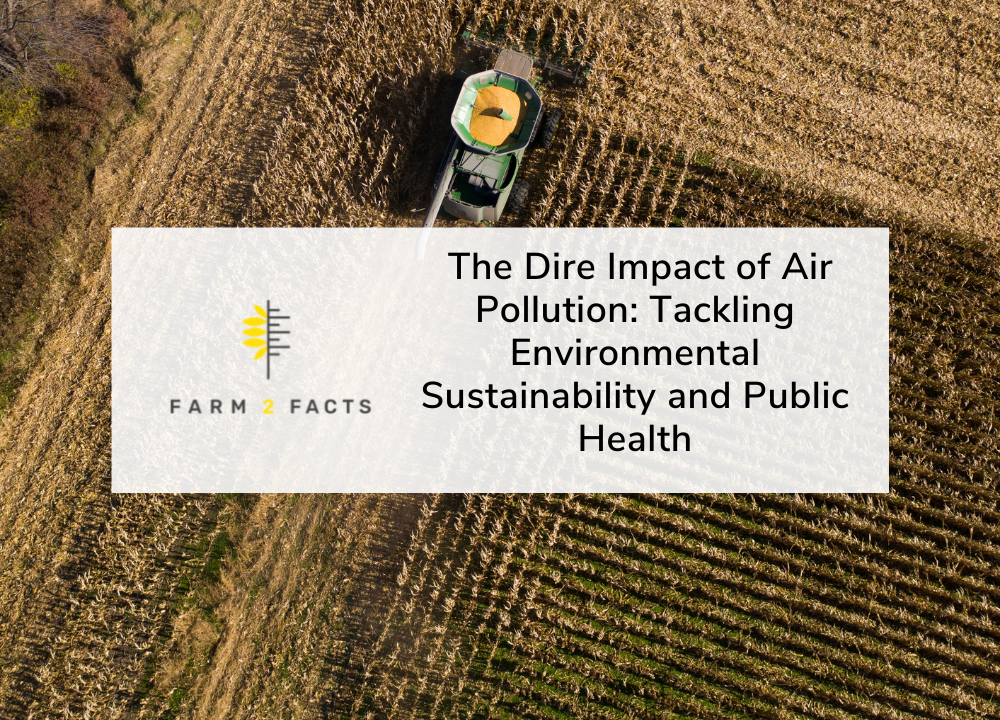
In recent years there has been a bigger societal push to become environmentally conscious in light of the rapidly increasing severity of climate change. On the individual scale, people are shopping second hand, buying food at farmers markets, and reducing their water usage. On a larger scale, governments are creating stricter climate change regulations, companies are taking more responsibility in their environmental practices, and economies are investing in renewable energy. Although related to climate concerns, air quality has been largely left out of health and climate change conversations, which tend to omit the close relationship between environmental sustainability and public health. Likewise, agriculture, which as an industry accounts for 11% of global emissions, weighs heavily on issues of climate change and public health but is often overlooked. In short, climate change is increasingly affecting public health, and we need to look at all the factors, including agriculture, that could drive solutions.
A landmark PNAS study published in May 2021 outlined the environmental impacts and related health damages that come with agriculture. The study found that air pollution from farms leads to 17,900 deaths in the United States each year from reduced air quality. Much of this damage comes from ammonia (NH3) emissions, most of which are from fertilizer application and livestock waste. The second leading source is a certain size of particulate matter (PM2.5), which comes from “dust from tillage, livestock dust, field burning, and fuel combustion in agricultural equipment use.” Of the 17,900 total deaths, 57% came from crop-based operations and 43% from livestock operations. Since a large portion of crops are for animal feed and nonfood products, 89% of total deaths are linked to food production. Lastly, of these food-related damages, 80% are credited to animal based foods.
Given these agriculture-based mortalities, globally reducing both food waste and consumption of animal-based foods can help mitigate agricultural chemical-related deaths. Furthermore, supporting practices that produce fewer agricultural emissions across all production systems could prevent 50% of deaths related to food production. Some of these practices include using organic soil amendments (like compost) and fertilizer inhibitors, managing livestock waste, and improving nitrogen use efficiency.
As mentioned in a previous Farm 2 Facts article, many small-scale farmers are already engaged in myriad environmentally sustainable practices to tackle the intertwined issues of climate change, environmental health, and public health. Many of our Farm 2 Facts farmer members are actively participating in these practices. Rodrigo Cala, for instance, uses several environmentally friendly agricultural systems, such as agroforestry, organic, permaculture, and silviculture. He also practices frequent rotational grazing of his livestock, which builds soil health and promotes environmental health.
Rodrigo’s practices are centered around being environmentally conscious, but, like many busy farmers, he lacks the time and resources to independently track and market these practices. In response to this need expressed by many of our members, we at Farm 2 Facts worked closely with farmers and other agricultural experts across the US to develop a brand new Ecosystem Services tool to enable farmers to measure and market their environmental impacts. The tool is launching later this summer, and we can’t wait for our members to use it!
